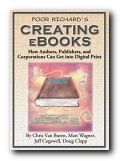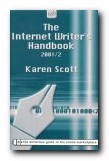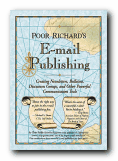terms used in the study of English language
This glossary of English Language terms contains the vocabulary and the jargon you will need in any analysis of language and its use. These terms are needed in a number of different subjects: language and linguistics, communication skills, the analysis of prose and poetry, and even certain aspects of philosophy. Click on the links for further explanations and examples.
Abbreviations
letter(s) or shortened word used instead of a full word or phrase
Accent
the features of pronunciation which indicate the regional or the social identity of a speaker
Acquisition
the process by which language skills are developed – particularly in infancy
Adjectives
a word which modifies a noun or a pronoun
Adverbs
a word which modifies a verb, an adverb, or an adjective
Agreement
the grammatical logic and coherence between parts of a sentence
Alliteration
the repetition of consonant sounds – usually at the beginning of words
Apostrophes
a raised comma used to denote either possession or contraction
Articles
a word that specifies whether a noun is definite or indefinite
Assonance
the repetition of vowel sounds
Audience
the person or persons receiving a speech or piece of writing
Brackets
Curved or square punctuation marks enclosing words inserted into a text
Capitals
Upper-case letters used to indicate names, titles, and important words
Clauses
a structural unit of language which is smaller than the sentence but larger than phrases or words, and which contains a finite verb
Cliché
an over-used phrase or expression
Colons
a punctuation mark indicating a pause ranking between a semicolon and a full stop
Commas
a punctuation mark indicating a short pause in a sentence
Conjunction
a word which connects words or other constructions
Consonant
an alphabetic element other than a vowel
Dialect
a form of speech peculiar to a district, class, or person
Figure of speech
expressive use language in non-literal form to produce striking effect
Form
the outward appearance or structure of language, as opposed to its function, meaning, or social use
Full stop
a punctuation mark indicating the end of a sentence
Function
the role language plays to express ideas or attitudes
Grammar
the study of sentence structure, especially with reference to syntax and semantics
Graphology
the study of writing systems
Homonyms
words with the same spelling but with different meanings
Hyphen
a short horizontal mark used to connect words or syllables, or to divide words into parts
Idiom
a sequence of words which forms a whole unit of meaning
Irony
saying [or writing] one thing, whilst meaning the opposite
Jargon
the technical language of an occupation or group
Language change
the development and changes in a language
Lexis
the vocabulary of a language, especially in dictionary form
Metaphor
a figure of speech in which one thing is described in terms of another
Metonymy
a figure of speech in which an attribute is substituted for the whole
Morphology
a branch of grammar which studies the structure of words
Noun
a word which names an object
Onomatopoeia
a word that sounds like the thing it describes
Oxymoron
a figure of speech which yokes two contradictory terms
Paradox
a figure of speech in which an apparent contradiction contains a truth
Paragraph
a distinct passage of writing which is unified by an idea or a topic
Participle
a word derived from a verb and used as an adjective or a noun
Phonetics
the study of the production, transmission, and reception of speech sounds
Phrase
a group of words, smaller than a clause, which forms a grammatical unit
Point of view
a term from literary studies which describes the perspective or source of a piece of writing
Preposition
a word which governs and typically precedes a noun or a pronoun
Pronoun
a word that can substitute for a noun or a noun phrase
Punctuation
a system of marks used to introduce pauses and interruption into writing
Received pronunciation
the regionally neutral, prestige accent of British English
Semantics
the study of linguistic meaning
Semicolon
a punctuation mark which indicates a pause longer than a comma, but shorter than a colon
Sentence
a set of words which form a grammatically complete statement, usually containing a subject, verb, and object
Simile
a figure of speech in which one thing is directly likened to another
Slang
informal, non-standard vocabulary
Speech
the oral medium of transmission for language
Spelling
the convention governing the representation of words by letters in writing systems
Standard English
a dialect representing English speech and writing comprehensible to most users
Structure
the arrangement of parts or ideas in a piece of writing
Style
aspects of writing (or speech) which have an identifiable character generally used in a positive sense to indicate ‘pleasing effects’
Stylistic analysis
the study of stylistic effects in writing
Symbol
an object which represents something other than its self
Synonym
a word which means (almost) the same as another
Syntax
the arrangement of words to show relationships of meaning within a sentence
Tense
the form taken by a verb to indicate time (as in past-present-future)
Text
any piece of writing or object being studied
Tone
an author’s or speaker’s attitude, as revealed in ‘quality of voice’ or ‘selection of language’
Verb
a term expressing an action or a state of being
Vocabulary
the particular selection or types of words chosen in speech or writing
Writing
the use of visual symbols to represent words which act as a code for communication
© Roy Johnson 2004
More on How-To
More on literary studies
More on writing skills
 Creating E-books
Creating E-books The Internet Writer’s Handbook
The Internet Writer’s Handbook Email Publishing
Email Publishing a selection of free font suppliers
a selection of free font suppliers
 Microsoft’s Manual of Style illustrates the company’s rules for both print and screen writing, as well as their requirements for visual presentation and language use.
Microsoft’s Manual of Style illustrates the company’s rules for both print and screen writing, as well as their requirements for visual presentation and language use.